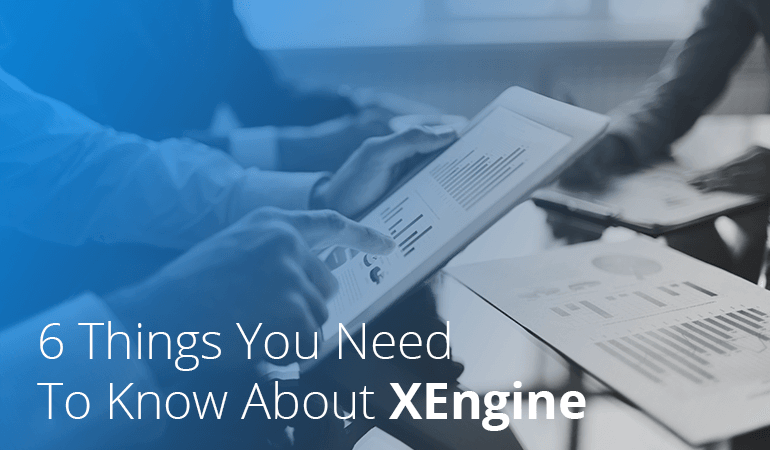
Xavor’s xEngine is a robust application integration solution which provides a basic infrastructure to connect your Agile PLM system, Oracle E-Business Suite, Dynamics AX or CRM with other systems. Here’s a list of the top items I consider to be the things that you definitely need to know about this XEngine solution.
Extensible Architecture of xEngine
It is designed to be extensible, meaning that new systems can be integrated without any changes to the core infrastructure. It has a very elastic adapter-framework which helps with an easy extension of the integrations. The XEngine server employs this elastic adapter which offers flexibility in extending integrations. Developers seek the XEngine server for this property. Example, you can choose from the list of application adaptors that xEngine provides OOB or you can create a custom one using services exposed by its adapter-framework.
Interoperability of xEngine
It exposes standards-based inbound & outbound interfaces that can send and receive data as messages to any system. Interoperability is the biggest competing factor. It comes to communication between systems. It server allows for data exchange between systems. With xEngine’s highly extensible and solid design, you are able to achieve interoperability without any special effort with the data or structure of the integration. Once configured, the adapters act as the bridge between the end systems and take care of the date communication for you.
Ease of Deployment
Compared to the conventional integration solutions, xEngine’s deployment is fairly quick, when using out of the box adapters. There is a lot of ease and convenience of deployment of XEngine server as it is very quick. It does not require complex configurations with end systems to make it work. The XEngine solution is built on Microsoft based technologies and doesn’t require any third-party licenses. This .NET based solution uses a very small message database which can live in all major database systems like Oracle, MS SQL Server & MySQL. The upcoming versions of xEngine are being built and verified on technologies other than Microsoft to reach an even wider audience.
Configurability of xEngine
If you consider the configurations in making the integrations work, there are more than 2 systems involved, it is nothing less than a nightmare. Which system is talking to which system? What are the endpoints? How are these going to authenticate the requests? Where are the credentials stored? What data messages came in and what messages went out? How often do you want the integration to run and in what mode? Where is the audit log and what details does it contain? What if there was a failure while processing the message? How will the integration react to the failures? Who will be notified, when?
You can imagine how complex and overwhelming the integration process could become. With xEngine, you can manage all configurations in one place with its powerful yet user-friendly Administration portal which gives administrators the ability to easily manage and setup configurations as well as ongoing maintenance of the integrations through xEngine. Worry no more because XEngine is here to rescue you.
Visibility from xEngine
It gives you full data transparency between the integrated systems. The XEngine solution takes data from the source system and converts it into a standard based XML format and then tracks and shows the entire lifecycle of it from the source to the destination system. This includes when the information has been received, what was processed, when it started processing etc. It provides an audit log along with a time stamp and processing stage along the way. It server ensures complete transparency by converting information into XML format.
With the quick analytics dashboard, you receive full visibility of the messaged lifecycle of how many came in from which systems, how many processed successfully, if there were any failures, what was the cause of the failure along with time stamp, etc. Additional options regarding email notifications (that you may want to include) for instance is that you may want xEngine to send an email message when there is an error or failure that occurred. Also, for every message status, you can manage the email notifications with XEngine.
Scalable Design of xEngine
The modular design of xEngine enables multi-tenancy of integrations. While using one xEngine instance, you can integrate any number of system(s) to any other systems. This goes hand in hand with the extensible architecture of XEngine built on universal standards using the XML and the adapter framework. All of your configurations stay in one place, so admins don’t have to hop between the directories and files to manage configurations in multiple places. XEngine app also provides such scalability.
Due to the elastic design, the solution of PLM integration with your product data has the ability to scale up without any architecture level changes. For example, if you’d want to integrate Agile PLM infrastructure with Oracle EBS and later on integrate the same Agile PLM with a CRM system, we can use the same instance of xEngine with the CRM adapter (and other configurations) and your integration will be in working condition. All thanks to XEngine and the XEngine app that makes everything possible .
Conclusion
In addition to everything discussed above, xEngine offers a dynamic workflow orchestration capability that allows users to design and execute complex integration workflows easily. XEngine is an amazing platform that offers dynamic and robust features. This workflow orchestration feature goes beyond basic point-to-point integrations by enabling the creation of intricate processes involving multiple systems.
